Ankle Pain
What is Ankle pain?
Ankle pain encompasses various sensations of discomfort affecting different areas of the ankle. It can arise due to a multitude of reasons, with the most prevalent causes being injury, arthritis, and natural degeneration over time. Depending on the underlying cause, individuals may experience pain, stiffness, or swelling in and around the ankle, sometimes rendering them unable to bear weight on the affected limb.
Typically, ankle pain can be alleviated through rest, the application of ice, and the use of over-the-counter pain medications. Healthcare professionals are proficient in treating injuries and managing arthritis, often employing non-surgical approaches. However, in cases of severe injury, such as a fractured ankle bone, or when conservative treatments fail to yield improvement, surgical intervention becomes necessary.
Additionally, individuals who have undergone ankle injury or surgery can benefit from a tailored physical therapy (PT) plan, designed to strengthen the muscles supporting the feet and ankles. This therapeutic approach not only aids in pain relief but also serves to prevent future injuries.
What are the parts of the ankle?
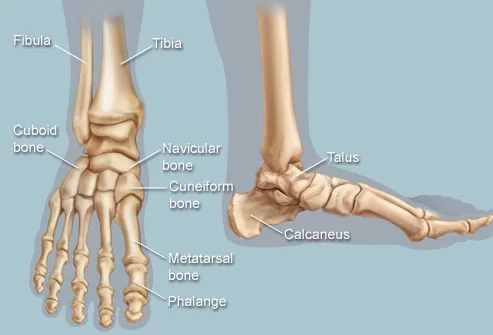
The ankles play a vital role in the musculoskeletal system by providing support to the body, facilitating balance, and enabling movement. This flexible joint allows for a range of motions, including pointing, flexing, rotating, and sideways movement of the foot.
The ankle is formed by the convergence of the lower leg bones, namely the tibia and fibula, with the foot bone called the talus. Ligaments serve to hold these bones together, while a complex interplay of tendons, muscles, and other soft tissues allows for the mobility of the foot and ankle. Due to this intricate structure, the ankle is susceptible to injuries.
Directed to the talocrural joint the ankle joint is a synovial joint that attaches the fibula and tibia bone with the talus bone of the foot. It contains two articulations corresponding to a tenon and mortise joint. In this analogy, the tibia and fibula act as the mortise, composing a notch where the body of the talus, the tenon, fits.
The primary functions of the ankle joint include dorsiflexion (lifting the foot upward) and plantar flexion (pointing the foot downward), as well as allowing a certain degree of pronation and supination in conjunction with the subtalar and midtarsal joints. Additionally, during the initial phases of walking, the ankle joint acts as a shock absorber as the heel makes contact with the ground.
Sign and Symptoms of Ankle Pain
The ankle joint serves as the connection point between the leg bones and the foot, facilitating the upward and downward movements of the foot. It is commonly understood that the ankle encompasses not only the joint itself but also the surrounding anatomical area, including the lower portion of the leg and the beginning of the flat section of the foot. Pain experienced in the ankle can stem from inflammation or injury affecting various structures in this region, such as the bones, joint space, cartilage, ligaments, tendons, or muscles. Ankle pain may manifest alongside several other symptoms, which can include:
- Swelling of the ankle
- Bruising in the affected area
- Redness surrounding the ankle
- Numbness or tingling sensations
- Instability of the ankle joint
- Burning pain sensations
- Ineptitude to carry significant weight on the involved ankle
- Stiffness in the ankle
- Weakness of the ankle muscles
Causes of Ankle Pain
There are further possible causes of ankle pain, which can range from critical injuries such as sprains or fractures to chronic diseases like arthritis. These diseases can impact the bones, muscles, cartilage, ligaments, or tendons in the ankle.
Ankle pain may present as a burning, aching, or throbbing sensation, and it can occur suddenly or gradually. Providing detailed information about the pain can assist healthcare providers in determining the underlying cause.
This article will analyze both common and rare causes of ankle pain, explain the diagnostic method, and examine specific therapy techniques.
Common Causes of Ankle Pain
If you are currently experiencing ankle pain, it is likely to be associated with one of these common causes:
Sprains
An ankle sprain occurs when one or more ligaments (tough, fibrous tissues connecting bones) are injured. Sprains often result from activities like stepping off a curb, walking on uneven surfaces, falling, or participating in sports such as tennis or basketball, which involve sudden changes in a direction leading to the ankle rolling or twisting inward.
Typically, ankle sprains affect the anterior talofibular ligament (ATFL), located on the outside of the ankle. Symptoms may include throbbing pain on the outer side of the ankle, swelling, bruising, and a sensation that the joint might give way.
While less common, medial sprains affecting the ligaments on the inside of the ankle can also occur. These sprains induce throbbing pain on the internal side of the ankle and generally result from the ankle moving outer.
High ankle sprains are rare and cause pain above the ankle, where the ligaments connect the lower leg bones. They primarily affect individuals engaged in impact sports like hockey or football.
Tendonitis
Tendonitis refers to the inflammation of tendons, which attach muscles to bones. Three types of tendonitis can affect the ankle: peroneal tendonitis, posterior tibial tendonitis, and Achilles tendonitis.
1. Peroneal Tendonitis
Peroneal tendonitis involves the inflammation of the peroneal longus or peroneal brevis tendons located along the outer side of the ankle joint.
Typically, individuals with this condition experience a dull ache or tightness on the outer side of the ankle. The pain often develops gradually over several weeks and worsens with standing or walking, but improves with rest. In intense circumstances, swelling may appear, and people may represent a popping sensation along the external side of the ankle.
Peroneal tendonitis commonly affects those who frequently run on uneven or slippery surfaces or engage in sports requiring rapid changes in direction. However, it can also result from improper training techniques, poor running and jumping form, or inappropriate footwear.
2. Posterior Tibial Tendonitis
Posterior tibial tendonitis primarily causes ankle pain on the inner part of the joint, accompanied by swelling.
While a twisting injury can trigger posterior tibial tendonitis, many individuals do not recall a specific trauma, and the pain gradually develops over time.
3. Achilles Tendonitis
Achilles tendonitis leads to burning, tightening pain along the back of the ankle. Mild swelling may occur, along with morning stiffness in the heel and calf. The Achilles tendon, which connects the calf and lower leg muscles to the heel bone, is the largest in the body.
Activities that exert stress on the Achilles tendon, such as sports involving sudden starts, stops, or changes in direction, can contribute to tendonitis. Wearing ill-fitting shoes, inadequate training, or the presence of heel bone spurs may also contribute to Achilles tendonitis.
Arthritis
Arthritis can impact the ankle in three immediate forms: osteoarthritis, rheumatoid arthritis, & post-traumatic arthritis.
a. Osteoarthritis
Osteoarthritis is a type of arthritis characterized by the gradual deterioration of cartilage in the ankle joint. Over time, the loss of cartilage causes bones to rub against each other, potentially leading to the development of bone spurs.
The pain associated with osteoarthritis can vary but often begins as an intermittent, achy sensation that progressively worsens, becoming a sharper and more constant pain over time.
b. Rheumatoid Arthritis
Rheumatoid arthritis is an autoimmune condition wherein the immune system attacks multiple joints throughout the body, commonly affecting the foot and ankle. Individuals with rheumatoid arthritis may experience systemic symptoms such as fatigue or unintended weight loss.
c. Post-Traumatic Arthritis
Post-traumatic arthritis can develop following any ankle-related injury. Similar to osteoarthritis, the condition involves the gradual wearing away of cartilage within the ankle joint.
Bone Fractures
Ankle fractures refer to breaks in one or more bones that connect to the ankle joint:
- Tibia (lower leg bone)
- Fibula (lower leg bone)
- Talus (foot bone)
Similar to ankle sprains, fractures can result from twisting, rolling, or falling, causing immediate and severe sharp pain, swelling, bruising, and an inability to bear weight on the affected ankle. In cases where the ankle joint becomes dislocated along with the bone break, the ankle may appear deformed.
Bone Bruises
Ankle bone bruises occur due to less severe injuries to the bone compared to fractures. They can occur independently or alongside an ankle sprain. Anklebone bruises are often extremely painful and cause swelling similar to that of a fracture.
Rare Causes of Ankle Pain
While healthcare providers will consider the following potential causes of ankle pain, they are less common:
Gout
Gout, a type of inflammatory arthritis, arises from the formation of uric acid crystals within one or more joints. Since gout is an infrequent cause of ankle pain, it is primarily considered in individuals already diagnosed with the condition.
Bone Infection
An ankle bone infection, known as osteomyelitis, rarely occurs. It is characterized by tenderness in the ankle joint, along with warmth and swelling.
Tarsal Tunnel Syndrome
Tarsal tunnel syndrome refers to the compression of the tibial nerve within the “tarsal tunnel” of the ankle, similar to carpal tunnel syndrome in the wrist. This syndrome can cause aching or burning pain, as well as numbness or tingling sensations on the sole, toes, and occasionally the heel, ankle, or calf.
Peroneal Neuropathy
The common peroneal nerve runs down the lower leg, branching into the deep peroneal nerve and the superficial peroneal nerve. Compression of this nerve can lead to various symptoms, depending on the site of compression.
For instance, compression on the outside of the knee and upper shin, often resulting from extended recumbency or crossing the legs excessively, may cause foot drop.
Compression of the deep peroneal nerve causes pain on the sides of the ankle, accompanied by burning or tingling sensations between the toes. This condition is rare and can result from wearing overly tight shoe straps.
Flat Feet
Individuals with very low or absent arches may experience pain and swelling in the ankles and feet. Sometimes, children’s arches fail to develop normally during growth, resulting in this condition.
Tumors
While benign tumors like synovial cysts are not uncommon in the foot and ankle, malignant bone tumors like chondrosarcoma are rare.
Diagnosis of Ankle Pain
Many ankle conditions can be diagnosed through a medical history review, physical examination, and X-ray. Additional imaging tests and/or blood tests may be necessary for certain conditions.
Medical History:
When discussing your ankle pain with your healthcare provider, provide detailed information. It is helpful to consider the following points before your appointment:
- Location of the pain (inside or outside the ankle)
- Description of the pain (aching vs. sharp) and its intensity (mild vs. severe)
- Duration of the pain: Did it occur immediately after an injury like a fall, or did it develop gradually?
- Presence of other symptoms besides ankle pain, such as fever, fatigue, or numbness
Physical Examination:
The healthcare provider will execute a physical examination of the ankle, examining for signs of swelling, bruising, or deformity. They may conduct precise tests associated with the ankle, including:
- Ottawa Ankle Rules:
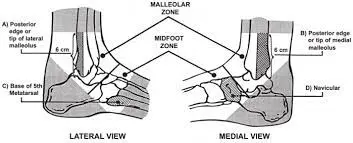
The Ottawa ankle rules help healthcare providers assess the likelihood of an ankle fracture. They involve applying pressure to the medial and lateral malleolus (the bony prominences on the inner and outer sides of the foot). Tenderness or the inability to bear weight for four steps may indicate the need for an X-ray.
- Talar Tilt Test:

In this test, your healthcare provider holds the heel of your affected ankle and gently turns it inward (inversion) and outward (eversion). By comparing the movement and laxity of the injured ankle to the uninjured one, they can evaluate potential sprains of the lateral or medial ankle ligaments.
- Squeeze Test:
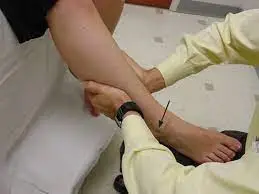
During the squeeze test, your healthcare provider applies pressure to the lower leg bones at the mid-calf level. If you experience pain above the ankle joint, it could indicate a high ankle sprain.
Blood Tests:
If your healthcare provider suspects a specific diagnosis, they may order blood tests. For example, they may request an anti-cyclic citrullinated peptide (anti-CCP) test to investigate rheumatoid arthritis or a C-reactive protein test to rule out infection by assessing inflammatory markers.
Imaging:
X-rays are useful for differentiating between ankle sprains and fractures, as well as identifying signs of gout or osteoarthritis. In some cases, additional imaging tests like computed tomography (CT) scans or magnetic resonance imaging (MRI) may be necessary for complex diagnoses, such as high ankle sprains, bone tumors or infections, or suspected fractures not visible on the initial X-ray.
Nerve problems, like peroneal neuropathy, may require a neurologist to perform a nerve conduction study and electromyography (EMG) test for diagnosis.
Differential Diagnoses:
Ankle pain doesn’t always originate from ankle structures. Other illnesses that can induce ankle pain contain:
- Blood Clots:
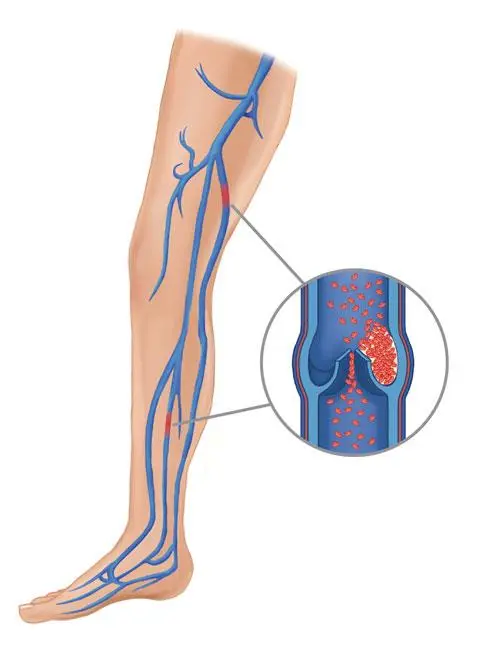
Deep vein thrombosis, a blood clot in the calf, can cause pain, swelling, and warmth in the ankle, foot, or lower leg. Doppler ultrasound is a quick test used to diagnose this treatable condition.
- Skin Infection:
Cellulitis, a skin infection affecting the foot, ankle, or lower leg, can cause ankle pain along with redness, swelling, warmth, and fever. Medical history and physical examination usually suffice for diagnosis, but elevated white blood cell count may aid in confirmation.
- Lumbar Radiculopathy:
Nerve pain around the ankle, characterized by burning or tingling, may stem from an irritated nerve in the lower spine (lumbar radiculopathy). Diagnosis typically involves an MRI of the lumbar spine.
- Acute Compartment Syndrome:
This serious condition occurs when pressure builds up within the muscles due to severe injury or bone fractures in the lower leg. Along with severe pain, symptoms include numbness, tingling, and burning sensations. Diagnosis is made through physical examination, and surgical intervention is necessary to relieve the pressure.
Treatment for Ankle Pain
Treatment options for ankle problems vary depending on the specific diagnosis, but a common initial approach for many ankle conditions is the RICE protocol. This protocol is often recommended before seeking medical attention.
RICE Protocol:
The RICE protocol is a standard method for treating various musculoskeletal injuries, including ankle sprains and tendonitis. It involves four essential steps:
- Rest: Resting the joint and allowing inflammation to subside is often the first line of treatment for most ankle conditions. In cases of severe pain, crutches may be necessary for support.
- Ice: Applying ice packs or cold gel packs for 15 to 20 minutes, three or more times a day helps reduce swelling and alleviate pain. Determinate not to use the ice straight on the skin.
- Compression: Using compression bandages, such as an ACE wrap, can provide support and immobilization to the ankle joint. However, be cautious not to apply excessive pressure, as it can lead to numbness, tingling, increased pain, cooling, or swelling in the foot or the area just below the bandage.
- Elevation: Elevating the ankle above the heart level by propping it on pillows helps reduce swelling in the initial days following an ankle injury.
Pain Medication:
Over-the-counter or prescription nonsteroidal anti-inflammatory drugs (NSAIDs) can be used to alleviate ankle pain and reduce inflammation. Commonly prescribed NSAIDs include ibuprofen, aspirin, and naproxen sodium. Topical NSAID gels can also be applied directly to the affected area for localized pain relief. In cases of moderate to severe pain, opioids such as codeine, morphine, or hydrocodone may be prescribed for a short period.
Physical Therapy:
Physical therapy is a commonly recommended treatment for ankle strains, tendonitis, and post-surgery rehabilitation. Physical therapists employ specific exercises to enhance ankle muscle strength, restore mobility, reduce stiffness, and prevent chronic ankle issues. Gradual and gentle exercises are advised, and it’s important to warm up before exercising to loosen the joints. High-impact activities and heavy lifting should be avoided until ankle discomfort diminishes.
Surgery:
Surgical intervention may be necessary for severe injuries and persistent pain. Further surgical techniques can be evaluated, containing:
- Arthroscopic Ankle Debridement: This procedure involves removing loose cartilage, inflamed tissue, and bony growths from the ankle joint. It can be performed arthroscopically using a small camera and specialized instruments inserted through small incisions.
- Ankle Ligament Reconstruction: Torn ligaments can be repaired or reconstructed using tendons from other areas of the body.
- Ankle Replacement Surgery: Severe ankle arthritis may require replacing the damaged joint with an ankle implant.
- Ankle Fusion: Ankle fusion is performed for individuals with severe arthritis who are not candidates for replacement surgery. It involves joining the bones below the ankle using screws, pins, or plates.
- Ankle Arthrodesis: This procedure fuses the ankle bones to eliminate joint movement and reduce pain caused by arthritis.
- Ankle Arthroplasty: Total ankle replacement or arthroplasty involves removing damaged cartilage and bone and replacing them with an artificial ankle joint.
Surgery is typically reserved for cases where conservative treatments have failed or when there are severe structural issues. Procedures can include debridement, fusion, or replacement surgery, depending on the specific condition and individual circumstances.
How to Prevent Ankle Pain?
Maintaining optimal muscle strength and flexibility in the ankle is crucial for preventing various ankle-related injuries. To reduce the risk of ankle injuries, it is important to follow these practices:
- Prior to engaging in physical activity, ensure that you adequately warm up. This can involve gentle stretches and movements specific to the ankle joint.
- Choose appropriate footwear that is suitable for the activity you intend to perform. For instance, when playing basketball, wear basketball shoes that provide proper ankle support, and opt for running shoes when engaging in running activities.
- Listen to your body’s pain signals. If you experience foot or ankle pain during an activity, slow down or stop to prevent further injury. Pushing through the pain can exacerbate the condition.
- Maintaining a healthy weight is essential as obesity can contribute to ankle pain. By maintaining an appropriate weight, you reduce stress on the ankle joint, which can lower the risk of developing ankle tendonitis and other related problems.
- High-impact aerobic activities, including plyometric exercises, may potentially aggravate existing ankle issues. To prevent the worsening of symptoms, consider transitioning to low-impact activities such as swimming or cycling, which provide cardiovascular benefits without placing excessive strain on the ankle.
Conclusion
Ankle pain can originate from various causes, ranging from acute injuries like sprains to chronic conditions such as arthritis. To determine the cause, healthcare professionals usually perform a thorough physical examination of the ankle and may order additional imaging or diagnostic tests.
The treatment approach for ankle pain often involves implementing simple measures like rest, ice application, and compression to alleviate symptoms. These conservative methods can effectively address mild to moderate ankle pain. However, in cases where the underlying cause is more severe, such as a bone fracture, more advanced interventions like prescription medication or surgical procedures may be necessary.
By conducting a comprehensive assessment and employing appropriate diagnostic tools, healthcare professionals can accurately diagnose the source of ankle pain and devise an individualized treatment plan. The goal is to alleviate discomfort, promote healing, and restore optimal function to the ankle joint.
It is important to note that treatment approaches may vary depending on the specific cause of ankle pain and the patient’s unique circumstances. Consulting with a qualified healthcare provider is essential to receive proper diagnosis, guidance, and treatment tailored to your specific condition and needs.
FAQ
How common is ankle pain?
Ankle pain & ankle damage are especially expected. You are additionally possible to have ankle aches if you:
Are beyond 65 years old.
Play sports and do workouts that implicate jerking side-to-side activities, or immediate modifications in direction.
Have overweight/obesity.
What causes ankle pain without injury?
Possible causes contain rheumatoid arthritis, ankle fractures, & genuine wear and tear. If the joint pain is not excessively severe, ice, rest, and over-the-counter painkillers should enough. Even though ankle sprains & arthritis can be extremely painful, a physician can assist without including to do surgery.
Can ankle ache move away on its own?
Most matters of foot or ankle pain are short-period and are generated by soft tissue damages like sprains or strains. These should slowly recover with the benefit of easy self-care efforts. Though some could take a few months to completely heal, you likely will not require to seek remedy from a healthcare expert.
Does walking reduce ankle pain?
Relaxing your feet wherever achievable by not running, walking, or standing for too long can permit you to avoid any additional swelling. Wearing comfy shoes with adequate arch reinforcement will even decrease the strain on the feet. Analgesics like paracetamol and ibuprofen can aid to reduce the pain.
How can I strengthen my ankles?
One easy ankle-strengthening training is to loop a resistance band near the foot and connect it to something weighty, such as a table leg. Then bend the foot ahead, backward, and obliquely, aspiring for 3 sets of 15 repetitions individually.
Can ankle pain be related to heart problems?
Foot aches & swelling can be indicators of inadequate circulation, which can result from heart-associated problems. Non-healing ulcers and open sores on the foot can indicate anemia, blood disorders, and vascular condition. Burning and swelling in the foot may point to kidney, heart, and circulatory issues.
Can diabetes cause ankle pain?
Two of the immediate reasons for aches in the ankle & foot day-to-day for a diabetic patient are peripheral neuropathy and poor blood circulation in the blood vessels.

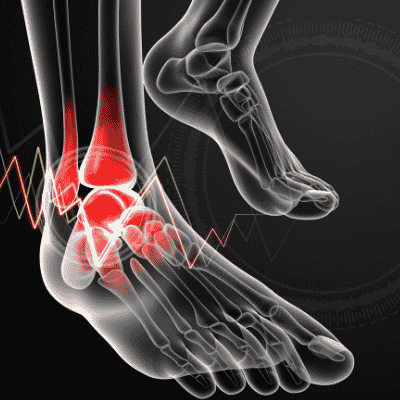
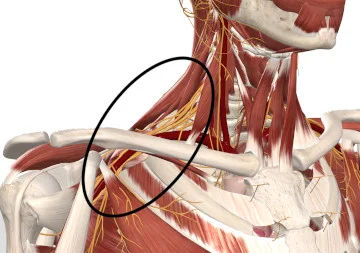
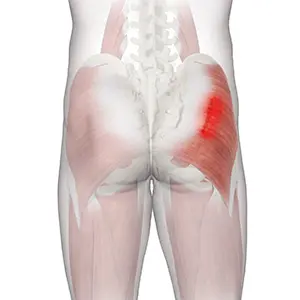




11 Comments